| << Chapter < Page | Chapter >> Page > |
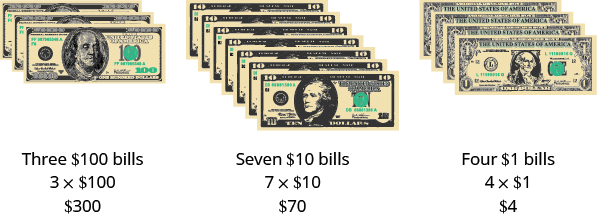
Find the total value of each kind of bill, and then add to find the total. The wallet contains

Base-10 blocks provide another way to model place value, as shown in [link] . The blocks can be used to represent hundreds, tens, and ones. Notice that the tens rod is made up of ones, and the hundreds square is made of tens, or ones.
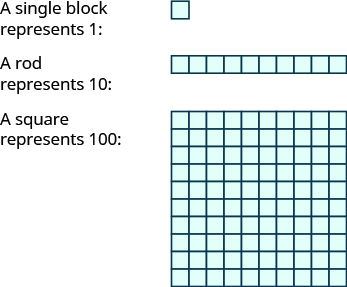
[link] shows the number modeled with blocks.
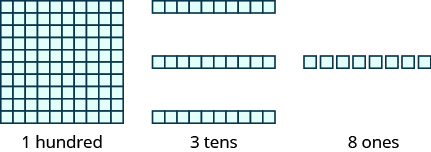

| Digit | Place value | Number | Value | Total value |
|---|---|---|---|---|
| hundreds | ||||
| tens | ||||
| ones | ||||
Use place value notation to find the value of the number modeled by the blocks shown.

There are hundreds squares, which is
There is tens rod, which is
There are
ones blocks, which is

| Digit | Place value | Number | Value | Total value |
|---|---|---|---|---|
| hundreds | ||||
| tens | ||||
| ones | ||||
The blocks model the number
Use place value notation to find the value of the number modeled by the blocks shown.
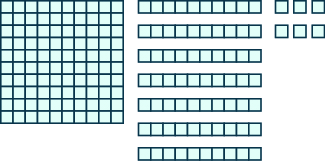
176
Use place value notation to find the value of the number modeled by the blocks shown.

237
By looking at money and blocks, we saw that each place in a number has a different value. A place value chart is a useful way to summarize this information. The place values are separated into groups of three, called periods. The periods are ones, thousands, millions, billions, trillions , and so on. In a written number, commas separate the periods.
Just as with the blocks, where the value of the tens rod is ten times the value of the ones block and the value of the hundreds square is ten times the tens rod, the value of each place in the place-value chart is ten times the value of the place to the right of it.
[link] shows how the number is written in a place value chart.
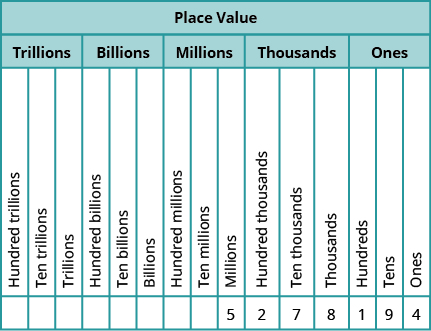
In the number find the place value of each of the following digits:
Write the number in a place value chart, starting at the right.
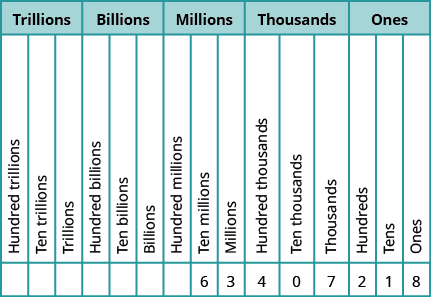
For each number, find the place value of digits listed:
For each number, find the place value of digits listed:
When you write a check, you write out the number in words as well as in digits. To write a number in words, write the number in each period followed by the name of the period without the ‘s’ at the end. Start with the digit at the left, which has the largest place value. The commas separate the periods, so wherever there is a comma in the number, write a comma between the words. The ones period, which has the smallest place value, is not named.

Notification Switch
Would you like to follow the 'Prealgebra' conversation and receive update notifications?